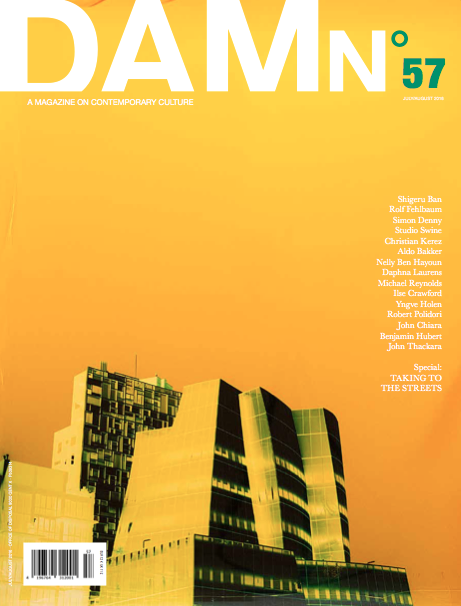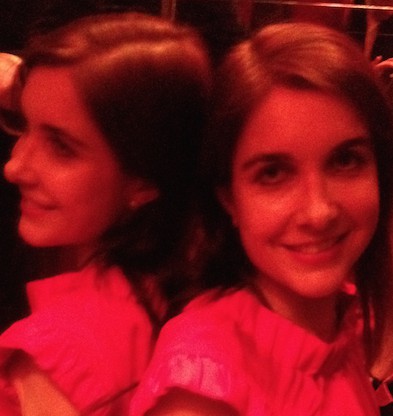Robert Polidori made his name photographing the soul and desolation of interiors. Amongst these are the decaying houses in Havana; Chernobyl and the ghost town of Pripyat in the aftermath of the nuclear meltdown; and destroyed homes in New Orleans following Hurricane Katrina. He also documented the restoration of the Château de Versailles, a pivotal moment in the palace’s history. For the last nine years, the Canadian-born, California-based photographer has been focusing his view camera on another subject: auto-constructed cities. Whether it is Amman, Jordan; Mumbai, India; or Rio de Janeiro, Brazil, these teeming metropolises have been built by impoverished inhabitants. Polidori calls these places ‘dendritic’, appropriating the term used for the branching extensions of a cell structure. His new work, including a large mural of a Mumbai street known as 60 Feet Road, is being presented in his upcoming exhibition at Paul Kasmin Gallery in New York.
The captivating mural is composed of a sequence of 22 photographs made from 8x10 colour film, which have been scanned and computer-stitched together. Polidori refers to it as a hybrid method, taking analogue originals and compressing them into digital. The resulting seamless image is reminiscent of Chinese and Japanese scrolls. “When you look at it in detail, it’s an incredible collage of a collaged building”, he says, referring to how it was made in segments by groups of people combining pieces of corrugated iron sheet. “It’s built with recycled materials from demolished buildings and is completely improvised by people with no architectural or engineering knowledge.” Polidori’s interest in this type of auto-constructed city dates back to 1996 when he was in Amman and saw a vernacular edifice fabricated by Palestinian refugees. “This got me into survivors taking squatted land into their own hands”, he says. “The slums of Mumbai are of particular importance because such a big part of the population lives in them.”
 Polidori came across 60 Feet Road by chance while taking a detour to avoid rush-hour traffic. “I was in a taxi and thought this place was amazing”, he explains. “It’s the seat of a plastic-recycling industry where Indians are doing industrial tasks by hand. Even though they’re living in poverty, there’s incredible ingenuity coming out of organic needs.” To facilitate his activity, he had fixers and police protection. “Everything in Mumbai is complicated due to the movie industry”, he laments. “Because there’d been riots in the area, the police wouldn’t let me shoot without protection. Anywhere in India, when you take out a camera with a tripod, you attract a crowd, which can be up to 500 people in an hour. And violence happens when crowds run amok.”
Polidori came across 60 Feet Road by chance while taking a detour to avoid rush-hour traffic. “I was in a taxi and thought this place was amazing”, he explains. “It’s the seat of a plastic-recycling industry where Indians are doing industrial tasks by hand. Even though they’re living in poverty, there’s incredible ingenuity coming out of organic needs.” To facilitate his activity, he had fixers and police protection. “Everything in Mumbai is complicated due to the movie industry”, he laments. “Because there’d been riots in the area, the police wouldn’t let me shoot without protection. Anywhere in India, when you take out a camera with a tripod, you attract a crowd, which can be up to 500 people in an hour. And violence happens when crowds run amok.”
He photographed the entire façade, spanning 12 metres, in one morning. Beginning on the right-hand side, Polidori moved his view camera 22 times whilst maintaining the same at perspective. “It lies between architectural drawing and mapping strategy”, he says of his approach. The extraordinary level of detail captures people in intimate moments, brushing their teeth and washing themselves. Several inhabitants are staring inquiringly at the photographer. Did Polidori feel that he was invading their personal space? “People who don't like being photographed walk back inside and those who stay become implicitly OK with it”, he replies. “I was a couple of metres away, not on their property. They’re aware of that subtlety and the cross-cultural looks between each other.”
 Polidori’s arresting photography invites controversy. His book After the Flood (2006), about abandoned homes in the wake of Hurricane Katrina, was criticised for capitalising on the disaster. His work has also been accused of lacking integrity, transgressing ethical principles by rendering tragic or violent situations artificially beautiful, as he told The Independent newspaper in 2010. Yet Polidori sees it as a historical document that has a sociological dimension. “I don't have a political axe to grind, I like to photograph places that won’t exist anymore”, he insists. “The path of modern civilisation and economic imperatives is taking away these kinds of places like 60 Feet Road. I’m making a record because in a decade it will be gone.”
Polidori’s arresting photography invites controversy. His book After the Flood (2006), about abandoned homes in the wake of Hurricane Katrina, was criticised for capitalising on the disaster. His work has also been accused of lacking integrity, transgressing ethical principles by rendering tragic or violent situations artificially beautiful, as he told The Independent newspaper in 2010. Yet Polidori sees it as a historical document that has a sociological dimension. “I don't have a political axe to grind, I like to photograph places that won’t exist anymore”, he insists. “The path of modern civilisation and economic imperatives is taking away these kinds of places like 60 Feet Road. I’m making a record because in a decade it will be gone.”
According to Polidori, the vast tracts of squatted land are bulldozed in stages. Temporary high-rises are constructed to offer transitional accommodation while remaining plots are removed, then a permanent tower block is built. “The same thing is happening to the favelas in Rio”, he adds. Polidori denies that there is a ‘poverty porn’ component to his work. “I didn't make these pictures to glorify the poverty of others”, he pronounces. “It’s respectful look at the incredible phenomenon of an organically-made habitat.” He concedes, however, that to the residents of Mumbai, Western photographers can seem exploitative. “I was in another slum near the airport and a young girl of seven or eight said to me, ‘All Westerners are photographing our trash.’” Has he considered exhibiting this work in Mumbai? “I would love to do an exhibition there and try to get people from all layers of society to come”, he says. “My gut feeling is that the work would be appreciated 50 or 60 years from now, when those neighbourhoods no longer exist.”

 Robert Polidori’s exhibition is at Paul Kasmin Gallery, New York, 8 September – 15 October.
Robert Polidori’s exhibition is at Paul Kasmin Gallery, New York, 8 September – 15 October.
The captivating mural is composed of a sequence of 22 photographs made from 8x10 colour film, which have been scanned and computer-stitched together. Polidori refers to it as a hybrid method, taking analogue originals and compressing them into digital. The resulting seamless image is reminiscent of Chinese and Japanese scrolls. “When you look at it in detail, it’s an incredible collage of a collaged building”, he says, referring to how it was made in segments by groups of people combining pieces of corrugated iron sheet. “It’s built with recycled materials from demolished buildings and is completely improvised by people with no architectural or engineering knowledge.” Polidori’s interest in this type of auto-constructed city dates back to 1996 when he was in Amman and saw a vernacular edifice fabricated by Palestinian refugees. “This got me into survivors taking squatted land into their own hands”, he says. “The slums of Mumbai are of particular importance because such a big part of the population lives in them.”

60 Feet Road (Bhatiya Nagar Façades) and Hotel Petra are published by Steidl.
He photographed the entire façade, spanning 12 metres, in one morning. Beginning on the right-hand side, Polidori moved his view camera 22 times whilst maintaining the same at perspective. “It lies between architectural drawing and mapping strategy”, he says of his approach. The extraordinary level of detail captures people in intimate moments, brushing their teeth and washing themselves. Several inhabitants are staring inquiringly at the photographer. Did Polidori feel that he was invading their personal space? “People who don't like being photographed walk back inside and those who stay become implicitly OK with it”, he replies. “I was a couple of metres away, not on their property. They’re aware of that subtlety and the cross-cultural looks between each other.”

60 Feet Road (Bhatiya Nagar Façades) and Hotel Petra are published by Steidl.
According to Polidori, the vast tracts of squatted land are bulldozed in stages. Temporary high-rises are constructed to offer transitional accommodation while remaining plots are removed, then a permanent tower block is built. “The same thing is happening to the favelas in Rio”, he adds. Polidori denies that there is a ‘poverty porn’ component to his work. “I didn't make these pictures to glorify the poverty of others”, he pronounces. “It’s respectful look at the incredible phenomenon of an organically-made habitat.” He concedes, however, that to the residents of Mumbai, Western photographers can seem exploitative. “I was in another slum near the airport and a young girl of seven or eight said to me, ‘All Westerners are photographing our trash.’” Has he considered exhibiting this work in Mumbai? “I would love to do an exhibition there and try to get people from all layers of society to come”, he says. “My gut feeling is that the work would be appreciated 50 or 60 years from now, when those neighbourhoods no longer exist.”

Hotel Petra Wall Detail #1, Beirut, 2010

Hotel Petra #10, Beirut, 2010
 Hotel Petra #7, Beirut, 2010
Hotel Petra is a former luxury hotel in Beirut. Having been damaged during the Lebanese Civil War (1975-1990), it was left to deteriorate for 20 years. The images serve as a metaphor for the after-effects of war, with the grandeur gradually slipping away and succumbing to decay.
Hotel Petra #7, Beirut, 2010
Hotel Petra is a former luxury hotel in Beirut. Having been damaged during the Lebanese Civil War (1975-1990), it was left to deteriorate for 20 years. The images serve as a metaphor for the after-effects of war, with the grandeur gradually slipping away and succumbing to decay.



